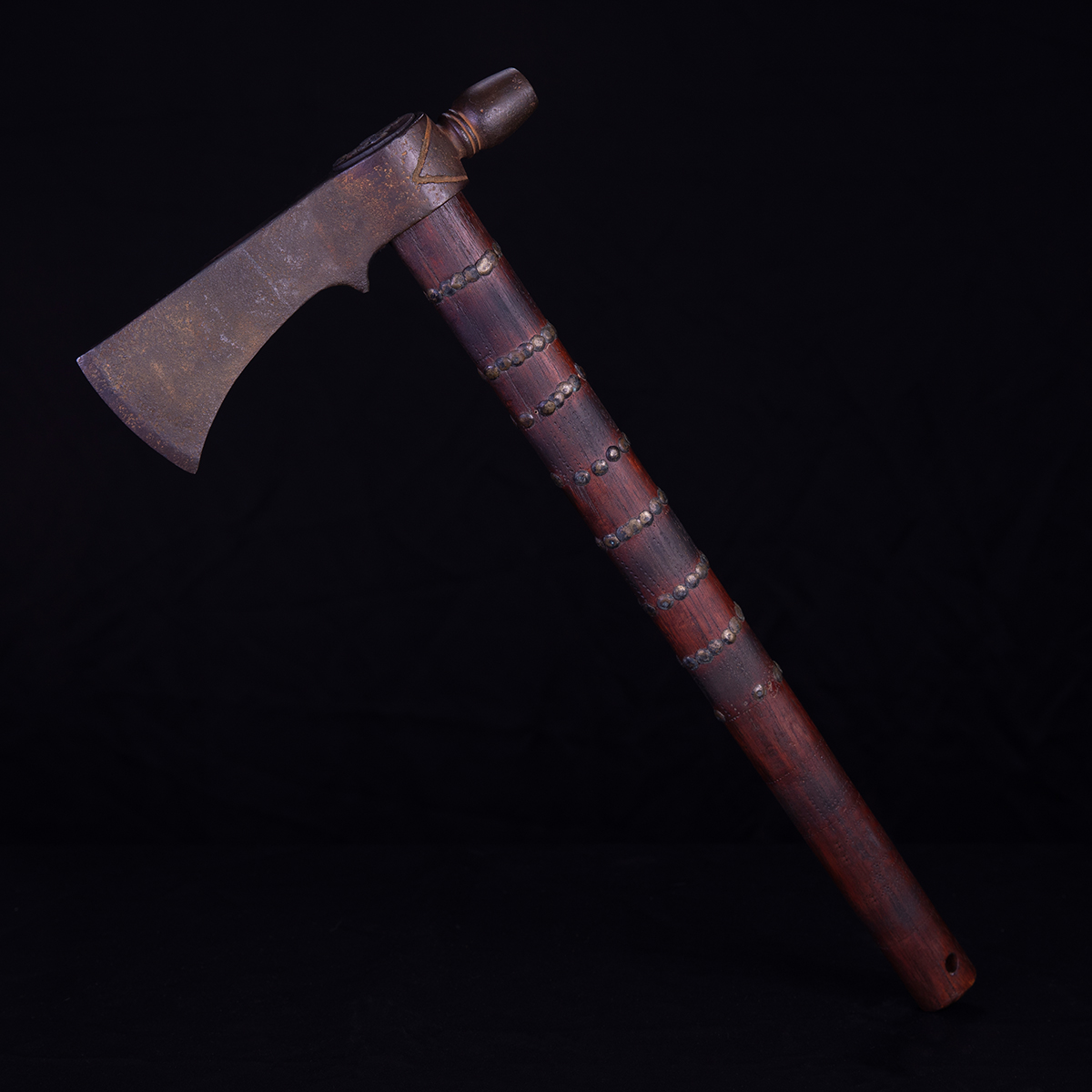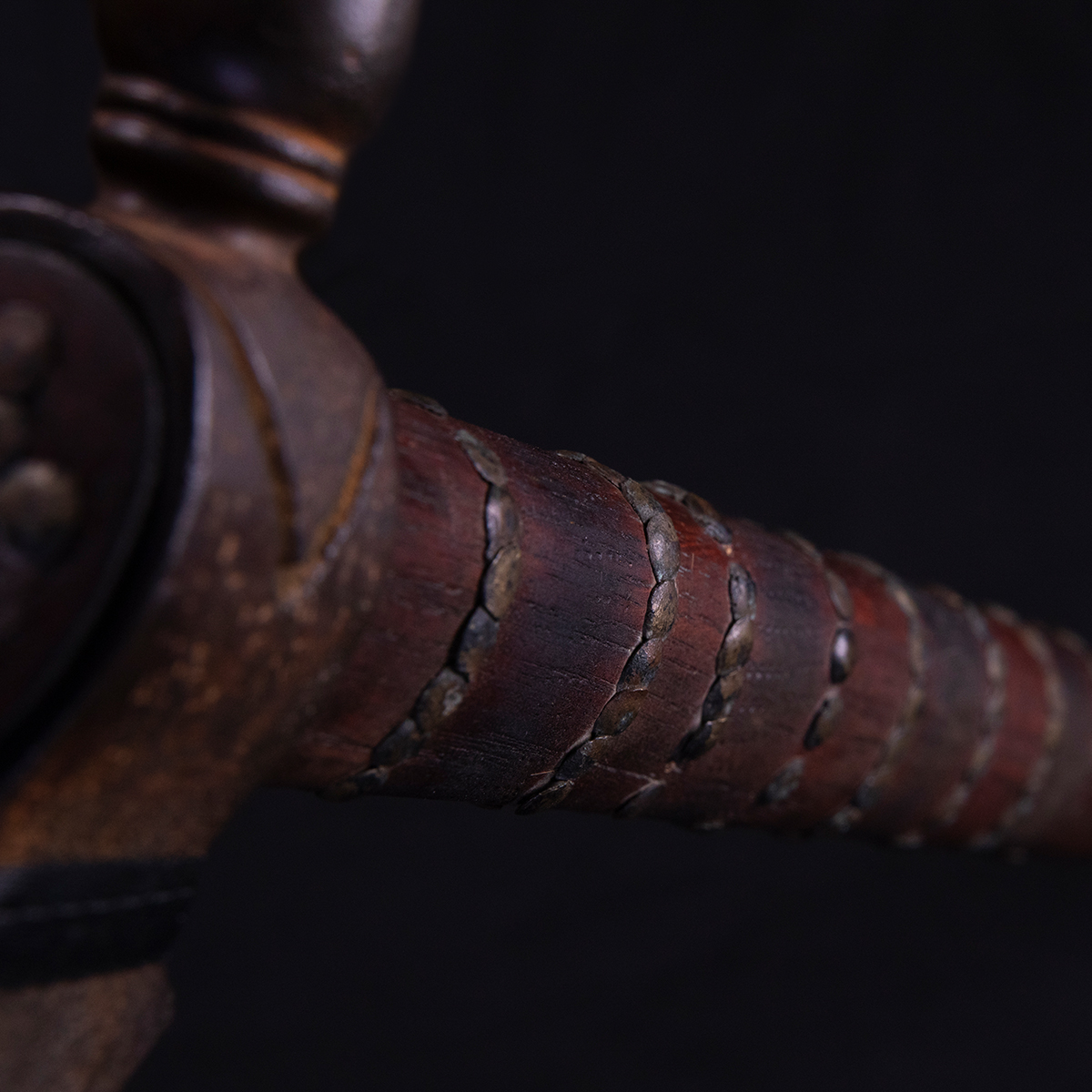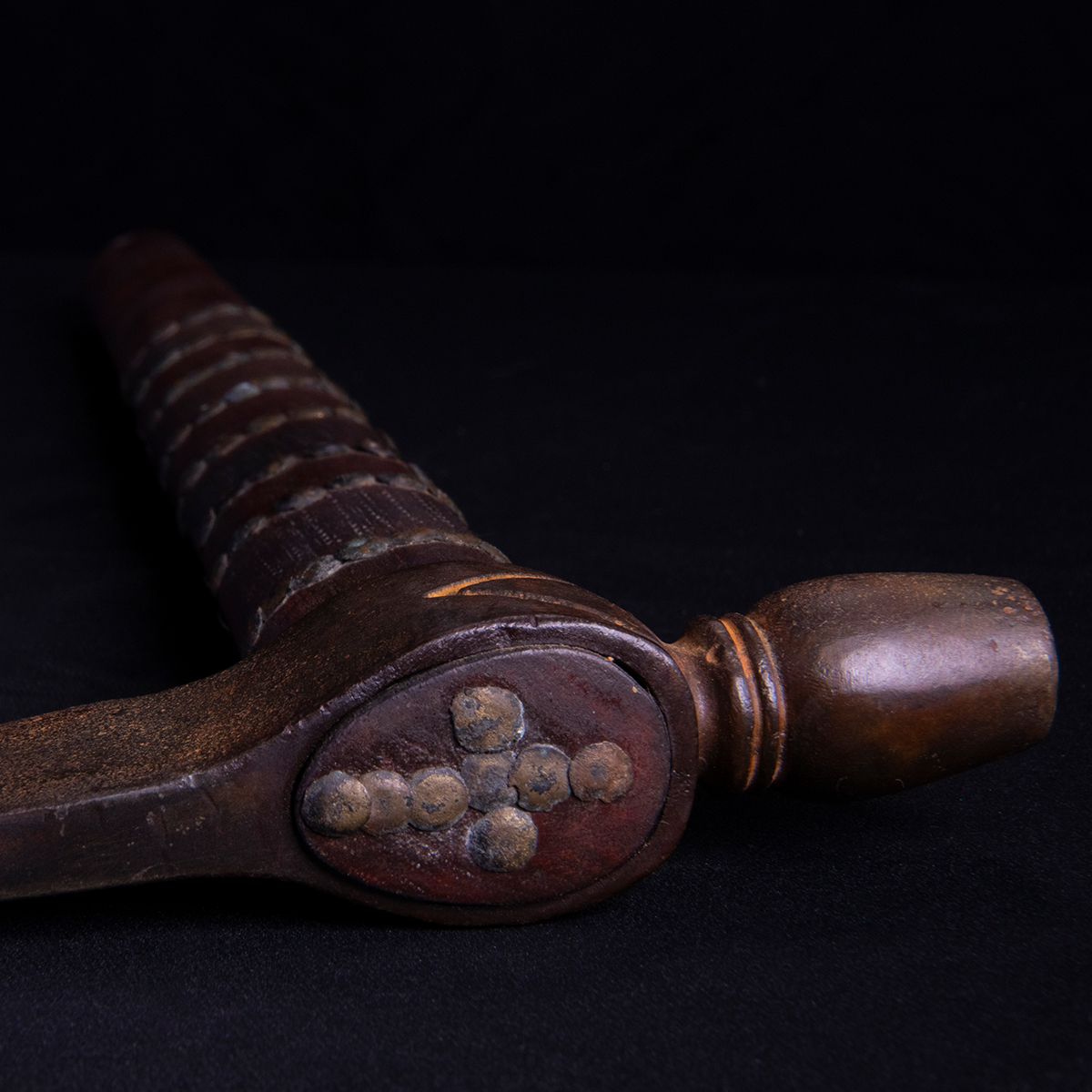Pipe Tomahawk
Materials
The pipe tomahawk, or the Smoak tomahawk, combined both the hatchet and the pipe into one single item. Early tomahawks were made of either stone, but after the 1600s using European technology, stone heads were replaced with metal blades. The tomahawk blade was extremely thin and from 7-9 inches long. It could be from any number of tribes Sioux, Cherokee, or even Iroquois.
Description
The pipe tomahawk was a type of war hatchet that was also a smoking pipe. Tomahawks were used for close combat like most striking weapons but were also popular throwing weapons.
The tomahawk was the Native American emblem of warfare – symbolized two sides of a coin: war and peace. A council ritual was associated with the tomahawk. When a war council started a tomahawk, painted red, was placed on the ground in front of the chief. If, after deliberation, it was decided to raise a war party the war chief would raise the red tomahawk and rouse the warriors with war songs and dances. To bury a tomahawk meant peace – to dig it up, meant to declare the most deadly warfare. Hence the phrase “to bury the hatchet” in reference to the settlement of disputes. Tomahawks were used in important ceremonies, such as signing a peace treaty. Ceremonial tomahawks were elaborately decorated with paint and feathers and often had a hollow stem fixed at the end with a pipe bowl for smoking.
The sharp edge was also used for skinning animals. With time, the pipe tomahawk became more ceremonial and was used more as a pipe than as a weapon.








